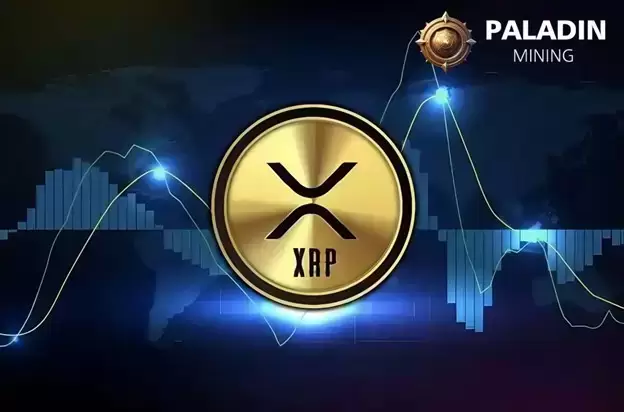 |
|
 |
|
 |
|
 |
|
 |
|
 |
|
 |
|
 |
|
 |
|
 |
|
 |
|
 |
|
 |
|
 |
|
 |
|
Cryptocurrency News Articles
Ethena's USDe: A Deep Dive into Stability Concerns and Growth Perspectives
Apr 16, 2024 at 06:30 am
Ethena Labs' USDe stablecoin has experienced rapid growth, but concerns arise regarding its resilience under market stress. While its yield mechanism resembles Terraform Labs' failed UST, Ethena's "synthetic dollar" model employs delta-neutral hedging to mitigate losses. However, negative funding rates and centralized counterparty risks pose challenges. Critics question the scalability and sustainability of USDe's growth given the finite size of the derivatives market and the lack of native yield on some collateral assets. Furthermore, Ethena's insurance fund and its interdependency with MakerDAO's DAI raise additional concerns. Despite these potential risks, experts maintain that the underlying trade is relatively safe under favorable market conditions.

Ethena's USDe: A Detailed Analysis of Stability and Potential Risks
Ethena Labs' synthetic dollar stablecoin, USDe, has emerged as a formidable competitor in the crypto market, amassing a market capitalization exceeding $2 billion in record time. However, the meteoric rise of USDe has sparked concerns regarding its resilience and potential susceptibility to the pitfalls of its predecessors.
A Novel Approach to Stablecoin Creation
Unlike traditional stablecoins backed by fiat currencies or other crypto assets, USDe adopts a unique "synthetic dollar" model. Users deposit crypto assets such as Bitcoin, Ether, or Staked Ether (stETH) into the protocol, which are then utilized to establish equivalent short perpetual positions or derivatives contracts with no expiration date.
This design, referred to as "delta-neutral," leverages a well-established technique in traditional finance known as the cash-and-carry trade. By hedging the deposited assets with short positions, the protocol aims to neutralize price fluctuations, ensuring that any gains or losses in the underlying asset are offset by corresponding adjustments in the short position.
Navigating Negative Funding Rates
A key challenge for USDe's stability lies in the potential for negative funding rates in the perpetual futures market. Negative funding rates arise when there is an imbalance between long and short positions, leading to a situation where short position holders must pay long position holders.
In a bullish market, funding rates are typically positive, allowing Ethena to collect fees from its perpetual contracts, which are distributed as yield to USDe holders. However, during market downturns, funding rates can turn negative, forcing Ethena to cover the costs of maintaining its short positions.
Collateral Diversity and Mitigation Strategies
To mitigate the impact of negative funding rates, Ethena maintains a diverse collateral portfolio, with allocations to Bitcoin, Ether, stETH, and USDT. The inclusion of stETH, which earns a staking yield, provides a buffer against funding costs.
In addition, Ethena has established an insurance fund of $32 million to cover potential losses in extreme market conditions. The fund is primarily funded by excess derivatives earnings generated by the protocol.
Centralized Counterparty Risks
One inherent concern with USDe's model is its reliance on centralized exchanges for its derivatives operations. Ethena mitigates this risk by partnering with off-exchange settlement custodians who hold user assets and facilitate the opening of perpetual positions at centralized exchanges.
However, the movement of assets between Ethena and its custodians raises concerns about the potential for operational mishaps or execution errors. Moreover, the reliance on centralized exchanges for clearing and settlement introduces a degree of counterparty risk.
Growth Limitations and Market Dynamics
USDe's growth potential is constrained by the size of the perpetual market and the maximum open interest limits imposed by exchanges. As USDe's market capitalization increases, the demand for short positions in derivatives may outpace the available supply, leading to higher negative funding rates and reduced profitability.
Additionally, the limited yield potential of Bitcoin, USDT, and Ether, compared to stETH, could limit the size of USDe's collateral base and its ability to withstand extended periods of negative funding rates.
Interdependence with DAI
Ethena's insurance fund includes an allocation to DAI, the stablecoin issued by MakerDAO. This creates an element of interdependence between the two stablecoins, as MakerDAO has recently voted to increase its debt ceiling to invest in USDe. In the event of a market downturn affecting both Ethena and MakerDAO, this interdependence could pose a risk to the stability of both stablecoins.
Assessing the Overall Risk Profile
Despite the potential risks outlined above, experts generally believe that USDe's delta-neutral approach provides a strong foundation for stability. The protocol's diverse collateral portfolio and insurance fund further enhance its resilience. However, it is crucial to note that no financial instrument is entirely without risk.
Users considering investing in USDe or any stablecoin should carefully assess the potential risks and benefits and make informed decisions based on their individual risk tolerance and financial situation. The crypto market is highly volatile, and past performance is not a reliable indicator of future results.
Disclaimer:info@kdj.com
The information provided is not trading advice. kdj.com does not assume any responsibility for any investments made based on the information provided in this article. Cryptocurrencies are highly volatile and it is highly recommended that you invest with caution after thorough research!
If you believe that the content used on this website infringes your copyright, please contact us immediately (info@kdj.com) and we will delete it promptly.
-

-

- A New York judge ruled that the majority of New York Attorney General Letitia James' civil securities fraud suit against crypto venture firm Digital Currency Group (DCG)
- Apr 12, 2025 at 01:05 pm
- In 2023, James sued James sued DCG and its CEO Barry Silbert, DCG’s now-bankrupt lending arm Genesis Global Capital and its former CEO Michael Moro and crypto exchange Gemini
-

- Florida and New Hampshire Are Proceeding With Bills That Would Allow State Investment in Bitcoin
- Apr 12, 2025 at 01:00 pm
- In a significant move towards the investment in digital assets in state fiscal planning, Florida and New Hampshire are proceeding with bills that would allow state investment in Bitcoin.
-

- Prominent XRP Holders Revealed: Uphold, Binance, and Ripple Dominate with Billions in Reserves
- Apr 12, 2025 at 01:00 pm
- Prominent crypto influencer Brett (@Brett_Crypto_X) recently shared an image revealing the top XRP wallet holders, drawing attention to the significant holdings of major institutions like Uphold, Binance, and Ripple.
-

- title: Ken Sim says his continued push to have Vancouver become a bitcoin-friendly city is “a hill that I’m willing to die on”
- Apr 12, 2025 at 12:55 pm
- As he awaits a city staff report on whether the digital currency could one day be integrated into the City of Vancouver's financial strategies and systems.
-

- Swedish MP proposes Bitcoin inclusion in the country's foreign exchange reserves
- Apr 12, 2025 at 12:55 pm
- A Swedish parliamentarian has introduced a budget-neutral plan to include Bitcoin in the country's foreign exchange reserves. The proposal follows the executive order issued by U.S. President Donald Trump on March 7 to create a Bitcoin reserve.
-

-

-

- Rollman Management, a mysterious venture capital firm, has completed a $50 million financing of the Web3 social media platform Wunder.Social
- Apr 12, 2025 at 12:45 pm
- Yesterday, the Web3 social media platform Wunder.Social announced that it had completed a $50 million financing, led by Rollman Management.



















![Crypto Otaku - CRYPTO CHAOS! 83K BITCOIN! CRYPTO RALLY!! XCN , JASMY , SWFTC LEAD!!! [Episode 228] Crypto Otaku - CRYPTO CHAOS! 83K BITCOIN! CRYPTO RALLY!! XCN , JASMY , SWFTC LEAD!!! [Episode 228]](/uploads/2025/04/12/cryptocurrencies-news/videos/crypto-otaku-crypto-chaos-k-bitcoin-crypto-rally-xcn-jasmy-swftc-lead-episode/image-1.webp)










































